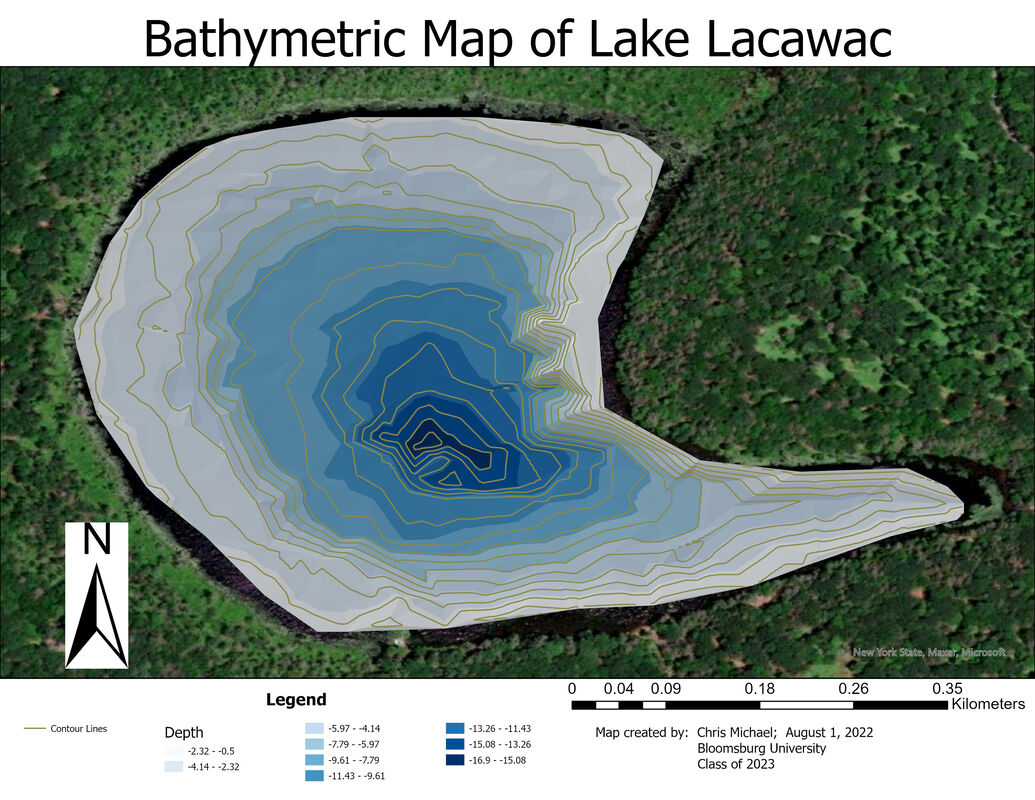“The Southernmost unpolluted glacial lake in North America”
Lake Lacawac was formed about 13,000 years ago, at the end of the last ice age, when the Wisconsinan glacier carved a crater in the red Catskill sandstone and as the climate warmed, melting ice created a scour lake. It is currently 52 acres in size, about a third smaller than its original size.
At its deepest point it is now 43 feet in depth; almost half its original depth. The lake is accumulating layers of organic dead plant material and sediment deposited over the years.
The lake is shaped like a half moon and has two distinct habitats. The prevailing wind pattern from the northwest causes continuous wave action that breaks down sandstone and washes away plant material from the eastern and southern shores leaving them sandy and barren. The north and west shores are a bog area caused by years of fallen trees and deteriorating plant matter.
At its deepest point it is now 43 feet in depth; almost half its original depth. The lake is accumulating layers of organic dead plant material and sediment deposited over the years.
The lake is shaped like a half moon and has two distinct habitats. The prevailing wind pattern from the northwest causes continuous wave action that breaks down sandstone and washes away plant material from the eastern and southern shores leaving them sandy and barren. The north and west shores are a bog area caused by years of fallen trees and deteriorating plant matter.
Location |
|
